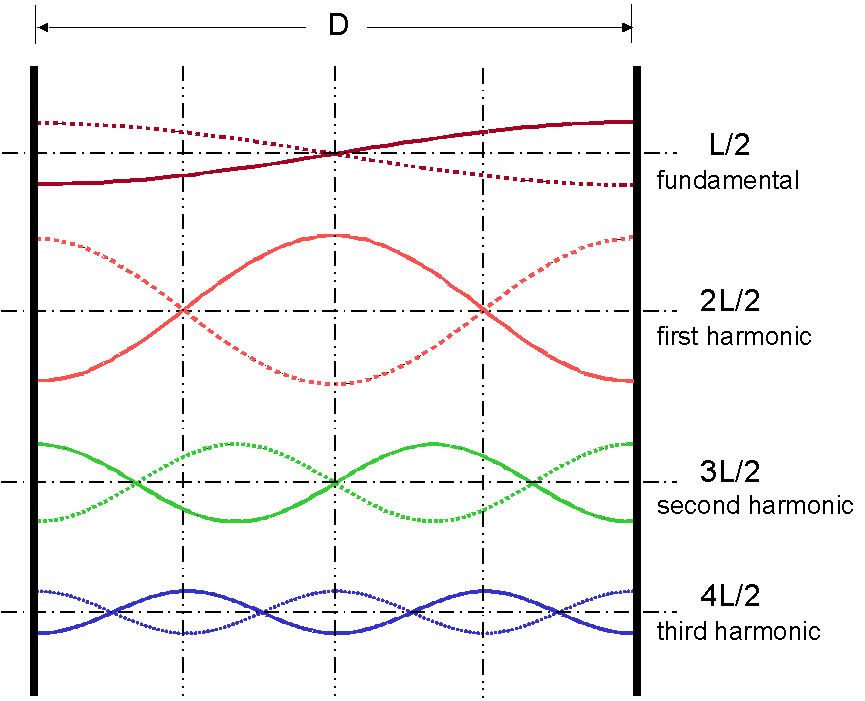Chapter 9: The Mechanics of Hearing
9.9. Timbre
There are two categories of sound covered in this section: simple and complex. Simple sounds are also called pure or simple tones because they consist of a single frequency, though the intensity of that frequency can vary. An example of a simple tone is a tuning fork because the sound it produces is almost entirely only one tone for musical instruments to match. Simple tones do not characterize normal real-world sounds because real-world sounds are more complicated. In everyday life, we hear sounds that consist of the second type of sound: complex sounds (or complex tones). A complex tone comprises two or more simple tones. Complex tones make up the vast majority of sounds we hear day-to-day. Some examples of complex sounds include voices and music.
The tone that has the lowest frequency in the complex tone is called the fundamental frequency, and the other tones are known as overtones or harmonics (see Figure 9.14). The fundamental frequency is what we perceive as being the pitch of a sound. Because the fundamental frequency is the perceived pitch we hear in a complex tone, we say the complex tone is characterized by its fundamental frequency. Most musical notes are complex harmonic tones (see Figure 9.15). They are complex because they consist of more than one frequency, and they are harmonic because the frequencies they contain are all multiples of a common fundamental frequency (F0). For instance, a harmonic complex tone with a F0 of 100 Hz would also contain energy at frequencies of 200 (second harmonic), 300 (third harmonic), 400 Hz (fourth harmonic), and so on. These higher frequencies or harmonics play an important role in determining the quality or timbre of a sound.


The timbre of a sound depends on its waveform, which varies with the number, frequency, and relative intensity of the overtones that are present. Different waveforms are produced by synthesizing (combining) different pure tones of various frequencies and intensities (Figure 9.16). For this reason, the timbre of a sound varies with the characteristics of the overtones. Two different musical instruments can be playing the same note but have different timbres because they have different complex tones despite having the same fundamental frequency.

Exercises
CC LICENSED CONTENT, SHARED PREVIOUSLY
Encyclopaedia Britannica, Tone
URL: https://www.britannica.com/science/tone-sound#ref895425
License: CC BY-NC 3.0 US
Adapted by: Nicole McCue
Encyclopaedia Britannica, Timbre
URL: https://www.britannica.com/science/timbre
License: CC BY-NC 3.0 US
Adapted by: Nicole McCue
Cheryl Olman PSY 3031 Detailed Outline
Provided by: University of Minnesota
Download for free at http://vision.psych.umn.edu/users/caolman/courses/PSY3031/
License of original source: CC Attribution 4.0
Adapted by: Nicole McCue
QUIZ written by: Elise Hinrichs
